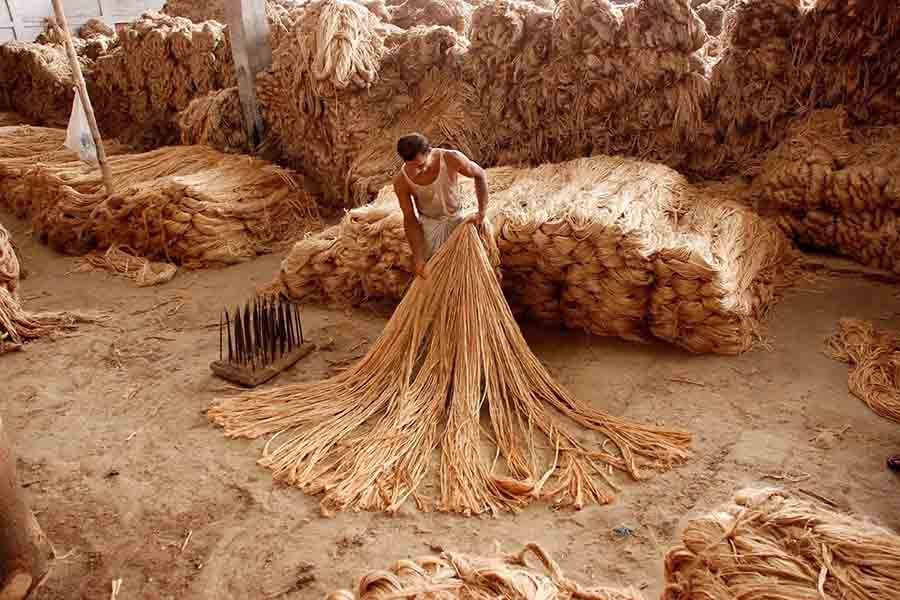The decision of the Bangladesh Jute Mills Corporation (BJMC) to develop industrial villages for diversifying production of jute products sounds good. Its outcome will now largely depend on how effectively the initiative is worked out. The rationale behind this move, as a realistic step, is understandable, considering the need for reinvigorating the jute sector by way of adding value and diversifying products made out of jute. Based on a feasibility study, the government has endorsed the proposal for establishing such manufacturing hubs in major jute producing districts as well as on the unutilised lands of jute mills under the BJMC.
The idea of setting up the manufacturing parks/villages in the jute-growing regions of the country makes sense. While giving due impetus to jute cultivation, it can help create an increasing awareness about product diversification and adaptation. Reports have it that the feasibility study has recommended 16 districts with highest jute production as suitable locations for the proposed jute products manufacturing parks/villages. Faridpur, followed by Rajbari, Magura, Jamalpur and Kushtia are reportedly the districts with the highest volume of raw jute production.
With the move now well set for implementation, prospect of jute, the golden fibre, now looks brighter once again. In fact, high prospect of this fibre as the most eco-friendly and cheaply available one was always around the corner. But there was barely any systematic plan for continuous research to develop and diversify jute products to match consumer tastes and preferences at home and abroad. Stray initiatives were there, but lack of concerted efforts and financing did not materialise those as commercially viable. No wonder, despite being the second largest producer of raw jute, Bangladesh is mostly in the age-old sack business, that too without much of a variety. The jute mills under the domain of the BJMC have been passing stress-free days as public entities with little or no urge to innovate new products and were content with only the traditional sacks. As for the private sector, it remained mostly busy exporting raw jute. In the wake of the stagnating performance of the sector for quite sometime, the move undertaken by the BJMC, though a belated one, may bring cheers for this highly prospective sector.
The country, according to industry statistics, produces 7.5 million bales of raw jute annually. Of this, the state-owned and private jute mills consume more than 60 per cent, and the products they manufacture are limited to sacks and yarns, for the most part. As for the rest, around 30 per cent are exported as raw jute and 10 per cent, used for a variety of domestic purposes. Industry insiders believe that with diversified production coupled with value addition, there is ample opportunity to increase exports as well as meet domestic demands at higher prices. It is here that the decision for setting up the manufacturing parks in the jute growing areas may prove quite encouraging for jute cultivation, which presently offers very little as profit to farmers. However, this can happen only if the plan is accompanied by facilitations including continuous research on product development and adaptation to both overseas and local markets.


